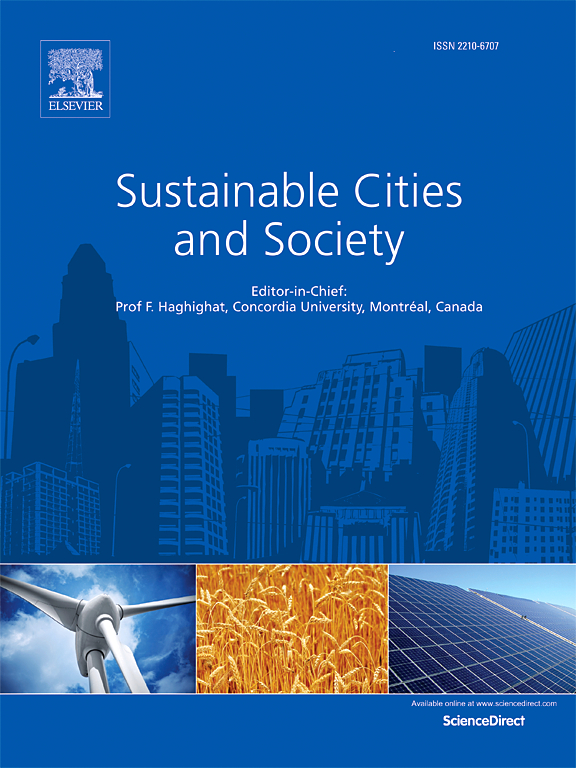The Role of Geographic Scale of Weather Data in Urban Building Energy Models
IF 10.5
1区 工程技术
Q1 CONSTRUCTION & BUILDING TECHNOLOGY
引用次数: 0
Abstract
Building energy consumption is sensitive to fluctuations in outdoor climate conditions, making weather data a crucial factor in determining the accuracy of building energy models. However, the influence of spatial scale on weather data and its effect on energy demand simulations has received limited attention. To address this gap, the present study applied an innovative approach integrating urban climate modeling and urban building energy modeling to evaluate the impact of meteorological data at varying spatial scales on buildings' energy consumption in the high-density urban environment of Seoul. This integration enabled an assessment of how weather data at different spatial scales, ranging from city-wide to individual grid levels, influenced buildings' energy use intensity. The results revealed that using generalized weather data, such as in the Typical Meteorological Year (TMY) files, underestimated energy demand. In contrast, applying localized weather data, particularly at the subdistrict level, led to a significant increase in monthly energy use intensity and predictive accuracy compared to the TMY case, which reached 56.46 % and 14.54 %, respectively. These results highlight the importance of considering finer-scale weather data in urban energy simulations to better capture the effects of local climate variations on cooling energy demand.
求助全文
约1分钟内获得全文
求助全文
来源期刊

Sustainable Cities and Society
Social Sciences-Geography, Planning and Development
CiteScore
22.00
自引率
13.70%
发文量
810
审稿时长
27 days
期刊介绍:
Sustainable Cities and Society (SCS) is an international journal that focuses on fundamental and applied research to promote environmentally sustainable and socially resilient cities. The journal welcomes cross-cutting, multi-disciplinary research in various areas, including:
1. Smart cities and resilient environments;
2. Alternative/clean energy sources, energy distribution, distributed energy generation, and energy demand reduction/management;
3. Monitoring and improving air quality in built environment and cities (e.g., healthy built environment and air quality management);
4. Energy efficient, low/zero carbon, and green buildings/communities;
5. Climate change mitigation and adaptation in urban environments;
6. Green infrastructure and BMPs;
7. Environmental Footprint accounting and management;
8. Urban agriculture and forestry;
9. ICT, smart grid and intelligent infrastructure;
10. Urban design/planning, regulations, legislation, certification, economics, and policy;
11. Social aspects, impacts and resiliency of cities;
12. Behavior monitoring, analysis and change within urban communities;
13. Health monitoring and improvement;
14. Nexus issues related to sustainable cities and societies;
15. Smart city governance;
16. Decision Support Systems for trade-off and uncertainty analysis for improved management of cities and society;
17. Big data, machine learning, and artificial intelligence applications and case studies;
18. Critical infrastructure protection, including security, privacy, forensics, and reliability issues of cyber-physical systems.
19. Water footprint reduction and urban water distribution, harvesting, treatment, reuse and management;
20. Waste reduction and recycling;
21. Wastewater collection, treatment and recycling;
22. Smart, clean and healthy transportation systems and infrastructure;
 求助内容:
求助内容: 应助结果提醒方式:
应助结果提醒方式:


